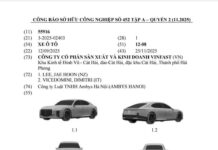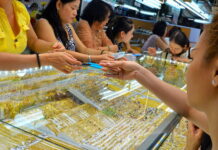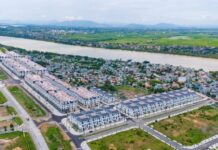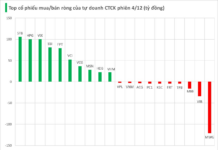Newly, a number of investors such as Nam Long, TTC Land have started to enter the “race” with apartment projects. In fact, the project launch of businesses has appeared in the late 2023. Immediately after the Lunar New Year holiday, this activity continues to create a new atmosphere for the real estate market in South Ho Chi Minh City.
For example, Nam Long is currently preparing for the apartment project Flora Panorama in Mizuki Park, a 26ha area in the South. These apartments are about to enter the handover phase with prices starting from 46 million VND/m2. This series of apartments is considered as the “valuable piece” of the Mizuki Park urban area, enjoying all the values from the convenience and services of the integrated urban area model. This is also a rare supply of completed apartments in Ho Chi Minh City at the present time, ready to welcome residents to move in right in the new year. From a pristine land in the South of the city, Mizuki Park is currently the settlement of more than 3,600 families. In this sales phase, the investor is accompanying customers with a series of attractive sales policies.
Meanwhile, TTC Land introduces limited luxury apartments in the Panomax River Villa project. Along with that, some apartment projects in the South of Ho Chi Minh City previously “lay dormant” and are now ready to restart after resolving legal issues.
Before the Lunar New Year, the information about the planning of Binh Chanh and Nha Be districts (South and a part of West of Ho Chi Minh City) transforming into the new city of Ho Chi Minh City has been activating real estate projects to restart. Accordingly, the Western City includes the entire Binh Chanh district with the goal of forming a health care, training, industrial production, high technology, international exhibition – fair center. The Southern City includes Nha Be district and Can Gio district. In which, Nha Be will be a place for industrial production, high technology, logistics, eco-tourism, and commercial services.

Information about planning and infrastructure is creating momentum for the real estate market in South Ho Chi Minh City. Photo: Ha Vy
Unlike the previous general planning model of creating 4 satellite cities separated from the central area by green corridors, then quickly connecting to the center by public transport, these companion cities create new development centers in a large urban area. In other words, these cities do not separate from the existing central area, but complement it with new centers, forming a multi-center urban system. According to consulting units, with this scenario, the new infrastructure developments, especially Ho Chi Minh City’s belt road 3, will be better utilized, creating new economic dynamic areas for the city.
At the scientific conference to solicit opinions on the draft of Ho Chi Minh City’s urban planning for the period 2021-2030, vision to 2050 organized by Ho Chi Minh City People’s Committee on January 31, architect Ngo Viet Nam Son suggested that Ho Chi Minh City should plan 2 more cities within the city in the South and the North. According to the proposal of Ngo Viet Nam Son, Binh Chanh district should be divided into two parts: the South and the North. From there, the Southern city includes Nha Be district, District 7, District 8, and the South of Binh Chanh district. The Northern city includes Hoc Mon district, Cu Chi district, and the North of Binh Chanh district.
Along with that, the proposals on implementing transport infrastructure are creating a new atmosphere for the real estate market in South Ho Chi Minh City. Specifically, in 2024, the city will put into operation many key projects including the underpass at the intersection of Nguyen Van Linh – Nguyen Huu Tho roads, the Phuoc Long Bridge connecting District 7 with Nha Be district (the southern gateway of the city),… The expansion projects of Le Van Luong street, Rach Dia bridge, Nguyen Khoai bridge and road, Thu Thiem 4 bridge, Can Gio bridge,… are being heavily invested in, increasing the connectivity between the South and the neighboring areas, creating momentum for the economy and society.
In the future, the Binh Tien bridge – road project with an investment of 3,500 billion VND will come into operation and contribute to the smooth movement from Binh Chanh, District 8 to the central District 1. The QL50 Road and the Belt Road 3 when put into operation in the future will help connect the provinces of the Mekong Delta and the Southeast region. The biggest advantage is that Nguyen Van Linh Boulevard (120m wide) currently exists – a crucial road axis balancing transportation function and urban space, connecting Thu Duc City with District 7, District 8, Binh Chanh, and Nha Be, as well as facilitating trade with the Mekong Delta provinces. These are important factors that support real estate projects in South Ho Chi Minh City from 2024 onwards.

Buyers are still interested in affordable housing segment.
According to CBRE Vietnam representatives, along with Phu My Hung – the most comprehensive planned urban area in the country at present, in recent 2 years, South Ho Chi Minh City has continued to be heavily invested in infrastructure, which has helped change the urban appearance in this area. Currently, Binh Chanh is experiencing fast urbanization and population growth. According to statistics over the past more than 10 years, Binh Chanh adds about 30,000 people each year, and the demand for quality housing also increases accordingly. In this regard, the townhouse and apartment segments are becoming the choice of many people, especially middle-range projects for young intellectuals working in industrial parks, hospitals,… Besides, the South is currently one of the places attracting a large number of overseas Vietnamese, people from provinces in the Mekong Delta to settle down in.
According to observations, right after the Lunar New Year 2024, many investors have started to make a comeback to the real estate market, including South Ho Chi Minh City. Many people before the Lunar New Year started to seek investment opportunities but did not really find satisfactory products, so right after the holiday ended, they returned to find investment opportunities and settlement. The post-Tet buyers’ attention still focuses on the apartment segment, at projects with existing communities, already handed over or about to be handed over. This product line can be sold immediately or rented out for immediate cash flow.
According to Nguyen Van Dinh, Chairman of the Vietnam Real Estate Association (VARS), the “winter” time of the real estate market is about to pass. Although the real estate market is still not strong enough to “go uphill,” it has somewhat escaped from the state of “losing momentum.”





































